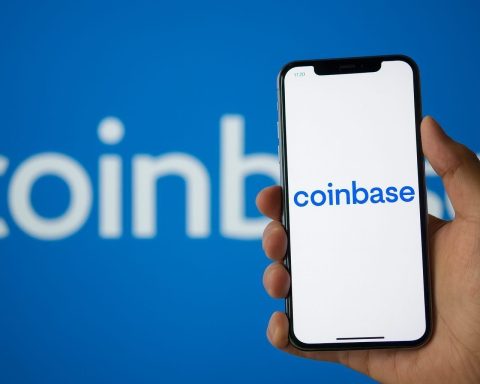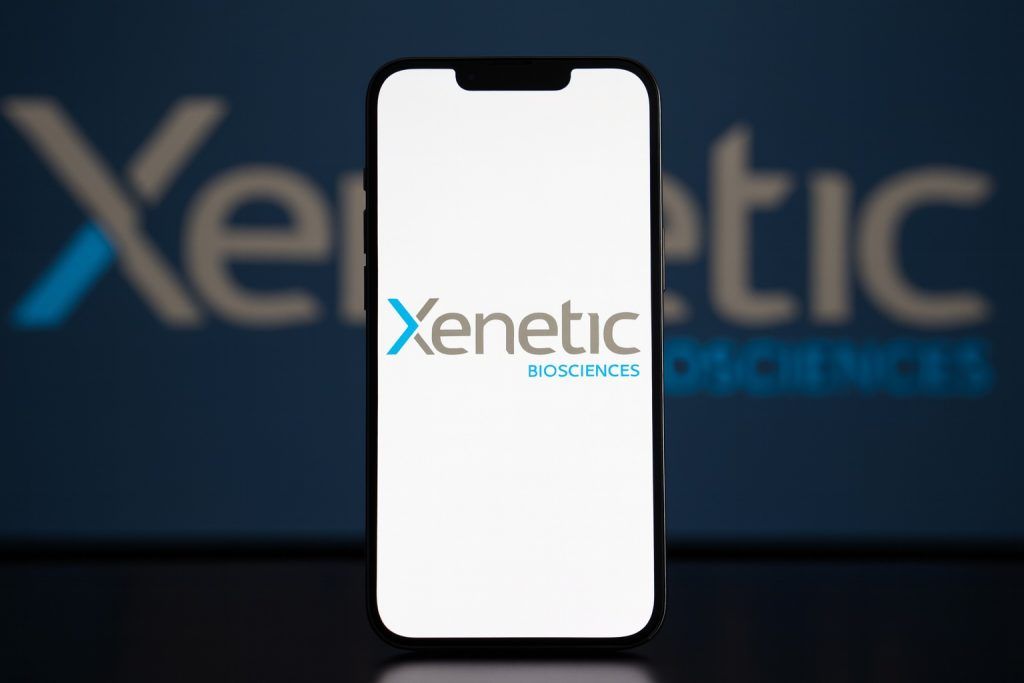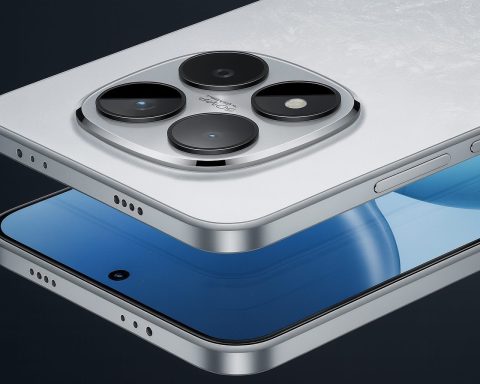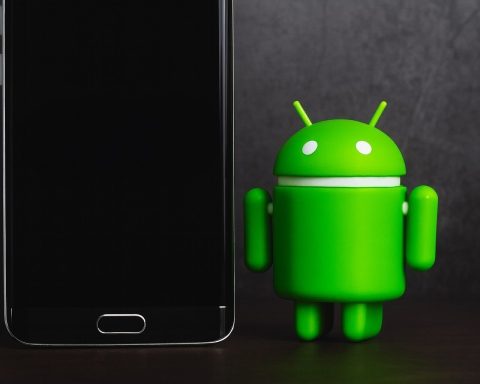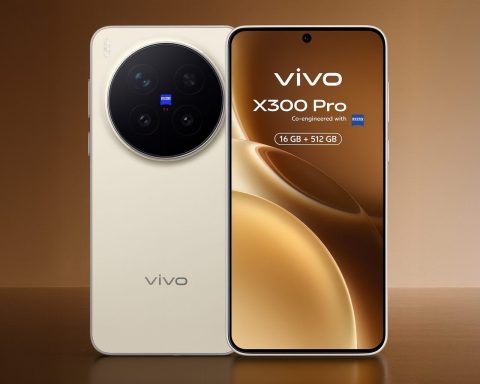- Google’s first dustproof foldable: The new Pixel 10 Pro Fold features a 6.4-inch outer display and an 8-inch inner display in a book-style design. It uses a gearless hinge rated for 100,000+ folds (~10 years) and is the world’s first folding phone with full IP68 dust/water resistance [1]. (Samsung’s latest Galaxy Fold is only IPX8, protected against water but not fine dust [2].)
- High-end specs & price: The Pixel 10 Pro Fold packs Google’s in-house Tensor G5 chip (with on-device Gemini AI), 16 GB RAM, and a triple-lens camera system similar to the Pixel 10 Pro slab phone. It is priced at $1,799 – on par with Samsung’s foldable – and began shipping on October 9, 2025 [3]. Google positions it as a cutting-edge “Pro” Pixel, blending the latest Android 16 software with hardware meant to challenge Samsung’s foldable dominance [4].
- AI “everywhere” in Pixel 10 lineup: All Pixel 10 phones use the new Tensor G5 chip to run Google’s Gemini Nano AI locally, powering features like Magic Cue (a context-aware assistant that e.g. auto-displays your flight info when you call an airline), Camera Coach (on-screen photography tips), and real-time Voice Translate for calls in 10 languages [5]. Google even includes a one-year Google AI Pro subscription with Pixel 10 Pro models to unlock advanced generative AI tools [6]. Google’s SVP Rick Osterloh claims “we’ve got the best models, we’ve got the best AI assistant” on these devices [7], underscoring Google’s confidence in its on-device AI (and throwing shade at Apple’s more cloud-reliant Siri).
- Pixel Watch 4 gets major upgrades: Launched alongside the Fold, Pixel Watch 4 now comes in two sizes (41mm & 45mm for $349/$399) with a brighter domed display (~3,000 nits) and battery life roughly doubled to ~40 hours (up to 3 days with always-on display off) [8]. It runs on a new Snapdragon W5 Gen 2 chip (with a Google co-processor) and introduces enhanced health features (FDA-cleared ECG, fall detection) plus an AI Fitness Coach. Notably, the Watch 4 supports a new wireless charger that reviewers call a “surprising advantage” over the previous model [9].
- Other launches – Buds 2a and more: Google also unveiled Pixel Buds 2a at $129, its new affordable earbuds with active noise cancellation (ANC), IP54 water resistance, ~20 hours total battery with case, and on-device AI for live translation and voice commands [10]. A refreshed Pixel Buds Pro 2 (still $229) adds a new color and software features like Adaptive Audio and head-gesture controls [11]. Google’s Nest smart home line was updated in early October with Gemini AI-powered cameras and doorbells providing “contextual alerts” (e.g. identifying a delivery driver) [12].
- Competing with Samsung – and Apple’s absence: The Pixel 10 Pro Fold arrives as Google’s answer to Samsung’s popular Galaxy Z Fold series. In fact, Google is explicitly trying to grab momentum back from Samsung’s Galaxy Z Fold 7, which has been a hit earlier in 2025 [13]. The Pixel Fold’s robust build and camera prowess aim to one-up Samsung, but Samsung still leads on a sleeker, lighter design. Notably, Apple has yet to release any foldable iPhone, giving Google and Samsung a head start in this niche category.
- Early reviews – durable, powerful, but bulky: Tech reviewers praise the Pixel 10 Pro Fold’s sturdy build quality and peace of mind – you no longer have to baby it around water or dirt thanks to the IP68 sealing [14]. Its inner OLED screen is reinforced with dual anti-impact layers, and the new hinge feels more solid than last year’s Pixel Fold. Camera quality is best-in-class for a foldable (the Fold inherits the Pixel’s famed computational photography), and the software is polished and feature-rich [15]. However, critics note the device is hefty (258g) and thick, with a still-visible display crease [16]. Google didn’t drastically redesign the look – aside from new colors like “Jade” green and “Moonstone” gray – so it “looks nearly identical to the Pixel 9 Pro Fold” at a glance [17] [18].
- Mixed performance and AI impressions: The Tensor G5 chip brings only modest performance gains – some benchmarks show it still trails top Qualcomm and Apple chips, and “CPU/GPU performance” remains a weak point according to one review [19]. Battery life on the Fold is solid (reviewers report all-day use easily, thanks to a bigger battery and Tensor’s efficiency). The phone’s many new AI tricks earned both admiration and skepticism: features like Magic Cue and Call Translation are innovative, but some found Gemini’s smart suggestions hit-or-miss in practice [20]. In short, Google’s on-device AI feels cutting-edge but not always reliable – an area to watch through future software updates.
- Alphabet’s stock near record highs on AI optimism: While Pixel devices are a small slice of Google’s business, they showcase the company’s AI capabilities – and investors are taking note. Alphabet’s stock (GOOGL) has surged roughly 29% in 2025, briefly topping a $3 trillion market valuation in early October [21]. Wall Street has been bullish on Google’s AI strategy across products; one analyst even raised his price target to $295 per share citing Google’s “leadership in generative AI” and diversified revenue streams [22]. The Pixel 10’s AI-centric features play into this narrative. However, Google’s hardware sales remain relatively modest (Pixels hold only ~5% of the U.S. smartphone market [23]), so the Pixel 10 Pro Fold is more about showcasing innovation and ecosystem strength than moving the financial needle.
Pixel 10 Pro Fold: Google’s AI-Powered Foldable Flagship
Google’s new Pixel 10 Pro Fold is the star of its 2025 lineup – a device that blends cutting-edge hardware with Google’s latest AI software. This foldable phone is branded as the “Pro Fold” variant of the Pixel 10 family, emphasizing that it shares the same core specs and AI features as the Pixel 10 Pro slab phones [24]. When closed, it looks like a typical premium smartphone with a 6.4″ OLED display; opened up, it reveals a spacious 8″ tablet-like screen – slightly larger than its predecessor and rival Galaxy folds [25]. The design retains Pixel’s signature aesthetics (matte glass back, camera bar), but with notable engineering upgrades: Google redesigned the hinge mechanism to a gearless system, which not only makes folding motion smoother but is rated for over 100,000 folds without failure [26]. In practical terms, Google says the hinge should last 10+ years of average use – addressing durability concerns that often plague foldables.
Perhaps the Pixel 10 Pro Fold’s biggest selling point is its durability. It is the first foldable smartphone ever to achieve an IP68 rating, meaning it’s fully sealed against dust and water [27]. This is a significant leap – even Samsung’s latest Galaxy Z Fold 7 is only IPX8 (water-resistant but not dustproof) [28]. With the Pixel Fold, you don’t have to worry about pocket lint or a bit of sand getting into the hinge mechanism and wreaking havoc. “With Pixel Fold, you truly don’t have to baby the phone around dirt or water,” one analysis noted, whereas Samsung’s foldables still have to fear fine dust [29]. This added ruggedness earned Google kudos from reviewers and could pressure Samsung to improve its own hinge sealing in future models [30].
Under the hood, the Pixel 10 Pro Fold packs flagship-grade specs. It runs on the Tensor G5 chip – Google’s latest custom SoC built on a 3nm process – paired with 16 GB of RAM and up to 512 GB of storage. The Tensor G5 isn’t just about raw speed (CPU performance is ~34% faster vs last gen [31]); it’s designed to excel at AI and machine learning tasks. A 60% more powerful built-in TPU (AI engine) enables all of the Fold’s new on-device AI features without needing cloud processing [32]. From the start, Google is positioning AI as the Fold’s differentiator: this device doesn’t just run Android apps, it actively helps you in smarter ways. For example, the Magic Cue assistant can proactively bring up context-specific info – such as your itinerary and boarding pass popping up automatically when you call an airline’s customer service [33]. Similarly, the Fold’s calling app can do live Voice Translate in 10 languages, letting you talk to someone who speaks another language and see a real-time translation on screen [34]. A new Camera Coach mode uses AI to analyze your viewfinder and suggest how to compose a better shot (e.g. “angle the camera down a bit” or “step closer for a portrait”) [35]. All these capabilities run locally on the device’s Gemini Nano AI model, meaning they work even offline and your data doesn’t have to be sent to the cloud [36]. This on-device AI focus not only differentiates Pixel from other Android phones but also from the iPhone – many of these AI tricks (Magic Cue, call translation, etc.) have no equivalent on Apple’s iOS yet [37]. It’s a bold attempt by Google to leverage its AI research leadership in consumer devices, an area where Apple has been more cautious. As one tech outlet noted, Pixel’s approach is “personalized and proactive,” aiming to anticipate user needs rather than just react [38].
Of course, core smartphone tasks haven’t been neglected. The Pixel 10 Pro Fold’s camera system is on par with Google’s other Pixel 10 Pro phones, which is significant – earlier Pixel foldables often compromised on camera hardware due to size constraints, but this model packs a full triple-lens array. It has a 48 MP main sensor, a 10.5 MP ultra-wide, and a 10.8 MP 5× telephoto periscope lens (capable of up to 20× hybrid zoom), if reports from carriers and Google’s store specs are accurate [39] [40]. In short, you don’t sacrifice imaging just because it’s a foldable. In fact, reviewers say the Pixel 10 Pro Fold has arguably the best camera setup of any foldable phone to date [41]. Google’s HDR+ computational photography, Night Sight, and new tricks like Video Boost (which uses cloud processing to enhance recorded videos) are all present. This gives the Fold a clear edge in camera quality over Samsung’s Fold series, which traditionally use smaller sensors and have struggled to match the photography chops of slab flagships. Engadget, for instance, praised that the Pixel Fold “has the best cameras of any flexible phone” and produces shots on par with Google’s bar-setting Pixel slabs [42]. That said, when compared to Google’s own Pixel 10 Pro XL (the non-foldable flagship with the biggest camera sensors), the Fold’s cameras are a step down in hardware – one reviewer called them “average cameras” by Pixel’s high standards [43]. So while the Fold beats other foldables in imaging, it can’t defy physics – its compact modules can’t quite match the giant sensor in, say, a Pixel 10 Pro XL or iPhone 17 Pro Max. For most users, though, the photos and videos from the Fold are more than excellent enough, and you’re getting top-tier computational photography on a unique form factor.
When it comes to software and user experience, the Pixel 10 Pro Fold aims to make the most of that big interior screen. It ships with the latest Android 14 (and is first in line for Android 15 updates) and Google has optimized many apps for large-screen and split-screen use. Multitasking is a core focus: you can run two apps side by side or drag-and-drop content between windows fluidly [44]. Google demonstrated using the Fold in a laptop-like “tabletop” mode – half-folded, sitting on a table – for hands-free video calls and even as a mini laptop for tasks like writing notes on one side while referencing a webpage on the other [45]. There’s also stylus support (supporting USI 2.0 pens) according to some sources, although Google hasn’t released a first-party Pixel stylus. Early reviewers generally found the continuitybetween screens smooth – e.g. if you open an app on the outer screen and then unfold, it seamlessly expands to the big screen. Google still lags Samsung on a few multitasking refinements (Samsung’s Fold has more years of polish in things like multi-window app docking and S-Pen features), but for Google’s second-generation foldable, the software experience is impressively refined. “Google isn’t treating the foldable as a standalone oddity – it’s part of the Pixel 10 family,” one analysis noted, highlighting that the Fold gets all the same software features and AI updates as its Pixel siblings [46]. That includes at least 5 years of security updates and Google’s Pixel-first feature drops.
Despite the many improvements, the Pixel 10 Pro Fold faces some criticisms. One unavoidable issue is its bulk – at 258 grams and nearly 12mm thick when closed, it’s a hefty device [47]. Gizmodo’s reviewer quipped that when you hold the ultra-thin Samsung Fold 7 side-by-side with the Pixel Fold, Samsung’s device “looks and feels like it’s from the future; the Pixel 10 Pro Fold feels like Google is too fixated on AI and neglecting why people buy new phones — for the hardware” [48] [49]. In other words, Google prioritized durability and AI features, but ended up with a chunkier design that doesn’t wow in the hand. The Pixel Fold is actually just 1 gram heavier than last year’s Pixel 9 Pro Fold, and about 43g heavier than the Galaxy Z Fold 7 [50]. Several reviewers noted they could feel that weight during daily use – it’s fine in a pocket but extended one-handed use can cause some hand fatigue. Another common complaint was the display crease: like most foldables, the inner screen has a crease where it folds. On the Pixel 10 Pro Fold, the crease is still “very visible” and even a bit warped looking at certain angles [51]. Samsung has gradually reduced crease visibility on its folds; Google’s hinge design may improve durability, but it hasn’t eliminated the crease. There’s also the matter of performance: while the Tensor G5 chip is more than fast enough for everyday use, it still isn’t breaking any records in CPU/GPU horsepower. Gizmodo’s review bluntly listed “weak Tensor G5 performance” as a con [52], noting that it lags behind the latest Snapdragon and Apple A-series chips in intense tasks (especially graphics-heavy workloads and high-end games). The trade-off is that Tensor prioritizes machine-learning tasks and efficiency – and indeed, the Pixel Fold achieves excellent battery life for a foldable. Many users report 7-8 hours of screen-on time, meaning a full day of heavy use is achievable, and moderate users might get into a second day on a charge. That is partly thanks to a large battery (~5000 mAh) and aggressive power management by Google’s adaptive battery software.
The Fold’s AI features are a double-edged sword in reviews. On one hand, there’s excitement that Google is bringing true next-gen AI functionality into a phone – “Magic Cue” and its ilk feel like a taste of the future where your phone proactively assists you. Some tech commentators have called Magic Cue an “exciting step toward the long-promised ‘agentic AI’ future of smartphones”, making the Pixel feel more helpful and personalized than ever [53]. On the other hand, early users have found not all of these features fully reliable. There were reports of Magic Cue offering irrelevant info at times, or the on-device Gemini AI occasionally misinterpreting context. “Gemini and Magic Cue are hit or miss,”one reviewer noted in their verdict [54]. These are first-generation features, so a bit of quirkiness is expected. Google will likely refine them with software updates (and as the underlying Gemini AI model improves). It’s worth noting that many AI features require that optional Google AI Pro subscription after the first year – an indication that Google may start monetizing advanced AI on consumer devices, similar to how some of Apple’s iCloud features are paid. Still, even without the subscription, the Pixel Fold does more on-device than perhaps any phone before it. This aligns with Google’s broader strategy to use AI as a selling point for Pixel: the company knows it can’t beat Apple or Samsung on hardware sales volume yet, but it can offer the “smartest” phone experience to carve out a niche of enthusiasts and tech-forward users.
Finally, there’s the price: at $1,799, the Pixel 10 Pro Fold is firmly in ultra-premium territory. It matches Samsung’s Galaxy Z Fold pricing dollar for dollar [55]. That’s a tough sell for many consumers when excellent slab phones (like Google’s own Pixel 10 Pro or an iPhone) cost $600–$800 less. Google seems aware that the Fold will appeal to a relatively small segment – likely tech enthusiasts, Android power users, and maybe some switchers curious about a foldable who trust Google’s software. By branding it as the “Pro Fold” and releasing it alongside mainstream Pixel 10 and 10 Pro/XL models, Google essentially acknowledges the Fold is a showcase device. As Bloomberg put it, Google released this foldable “ahead of the all-important holiday shopping season” as part of its 2025 Pixel lineup, trying to regain some innovation spotlight from Samsung [56]. Google’s bet is that by pushing boundaries (first dustproof foldable, AI integration, etc.), it can build buzz and slowly grow its hardware credibility. Even if Pixel folds only sell in the hundreds of thousands rather than millions, they demonstrate what Google’s ecosystem can do when hardware and software are tightly integrated – which in turn can bolster the appeal of Android as a whole.
Pixel Watch 4: Bigger Battery, Smarter Coaching – Finally a True Apple Watch Rival?
Alongside the Pixel 10 phones, Google launched the Pixel Watch 4, its latest smartwatch, and it represents a significant refinement over prior models. The Pixel Watch series, since debuting in 2022, has been praised for style but critiqued on battery life and a few missing features. Google clearly listened: the Pixel Watch 4 doubles battery life and adds substantial polish, making it a much stronger competitor to Samsung’s Galaxy Watches and even Apple’s Watch series.
One immediate change is that Google now offers the watch in two sizes – a 41 mm case (same as the original Pixel Watch and last year’s model) and a new larger 45 mm case for those who prefer a bigger display [57]. The design language remains the same distinctive circular dome; it uses an Actua 360 OLED display with waterfall edges covered in custom Gorilla Glass. Importantly, that display is much brighter now – peaking around 3,000 nits [58] (comparable to the latest Apple Watch X displays), which greatly improves outdoor visibility. The larger model’s screen is around 1.4 inches across, offering more room for text and complications. Both sizes still feature an always-on display mode and 5 ATM water resistance.
The headline improvement, however, is battery life. Google claims up to 40 hours on a charge with always-on display enabled (and roughly 3 days with AOD off) [59]. This is a huge leap – roughly double the endurance of last year’s Pixel Watch [60]. In real-world terms, most users can now get through two full days of normal use, or at least a day and a half with AOD on, whereas previous Pixel Watches struggled to last a full 24 hours. Early reviews back up Google’s battery claims; many testers report having ~30–40% remaining after 24 hours of wear (mixed usage with sleep tracking off). This boost comes thanks to a combination of a slightly larger battery and the switch to a more efficient SoC: the Watch 4 is powered by Qualcomm’s Snapdragon W5+ Gen 2 chipset (a big jump from the older Exynos-based chip in prior models) with a Cortex-M33 co-processor that handles low-power tasks [61] [62]. The new chip not only extends battery life but also makes Wear OS feel snappier – animations, app launches, and assistant responses are all quicker according to reviewers. Google also upgraded the RAM to 2 GB and kept 32 GB of storage for music and apps.
Another much-appreciated change is in charging and compatibility. The Pixel Watch 4 introduces a new charging systemthat appears to align with the emerging Qi2 wireless charging standard. In fact, one reviewer noted that “the best thing about the Pixel Watch 4 is Google’s new charger”, praising that it can finally charge on more types of wireless chargers [63] [64]. Unlike previous Pixel Watches which only charged on Google’s proprietary magnetic puck, the Watch 4 can charge on some third-party Qi chargers (and it has a new Google magnetic charging dock accessory). This newfound flexibility is seen as a “surprising advantage” [65] – for example, you might use your phone’s reverse wireless charging to top up the watch, or use a common charging mat when traveling instead of carrying a separate watch charger. It seems Google is moving closer to interoperability here, which earned a thumbs-up from tech bloggers.
On the health and fitness front, Pixel Watch 4 expands Google’s integration of Fitbit features (Google owns Fitbit). It still offers 24/7 heart-rate tracking, blood oxygen (SpO2) monitoring, ECG app, and skin temperature sensing like the prior model. New in this generation is a feature Google calls “AI Fitness Coach”, which leverages on-watch AI to provide personalized workout suggestions and tips. It can recommend workouts or recovery days based on your historical data and goals. The watch also adds advanced running dynamics (via Fitbit’s algorithms) and can detect signs of atrial fibrillation via continual heart data (pending FDA approval). For safety, there’s fall detection and an emergency SOS feature. Notably, the Pixel Watch 4 can even use satellite connectivity for emergency texting if your paired phone is out of service range – thanks to integration with the Pixel phones’ satellite SMS feature, the watch can relay distress signals when away from phone, a first for Wear OS [66].
The software is Wear OS 4 (co-developed with Samsung), with Google’s Pixel-specific tweaks on top. The interface got some polish and new animations, and Google Assistant on the watch is now supercharged by Gemini AI. You can ask the assistant more conversational queries, and it can even summarize your notifications or messages using on-device AI. However, early reviews found the Assistant’s new AI “Gemini” smarts to be a bit unreliable on the watch [67]. The Verge noted that while the Pixel Watch 4 is a “significant leap” in Google’s smartwatch lineup, the Gemini AI assistant would sometimes lag or give odd answers, and turn-by-turn navigation could still be wonky at times [68]. This suggests that Google’s ambitious AI push is still a work in progress on wearables. On the bright side, core functions like fitness tracking, notifications, and music control are solid, and the watch benefits from the extensive app ecosystem in Google Play for Wear OS.
Compared to the Apple Watch Series X (2025) or Samsung’s Galaxy Watch 8, the Pixel Watch 4 holds its own much better now. It has closed the gap in battery life (an area where Apple still struggles, often barely 18 hours on a charge). Its build quality – stainless steel case, optional sapphire crystal on some editions – and style remain top-notch, often earning compliments for its jewelry-like looks. And with the larger size option, it can appeal to a broader range of users. Starting at $349, it’s competitively priced below the Apple Watch (which often starts around $399 for smaller aluminum models, higher for steel) and in line with Samsung’s pricing.
Google clearly sees the Watch as a key part of its ecosystem strategy. Rick Osterloh even touted how Pixel phones and watch together can do things like seamless camera remote control, emergency satellite SOS (with the watch piggybacking off the phone’s connection), and cross-device health data syncing [69]. The Pixel Watch 4 is finally a credible alternative to Apple Watch for Android users, and perhaps even something that might tempt a few Apple users to switch. It’s still early days – Google’s wearables market share lags far behind Apple’s dominance – but the consistent improvements show Google is serious about the category. As Android Central put it, “the Google Pixel Watch 4 impressed me with its upgrades, but it has its quirks,” capturing the sentiment that this watch is on the right track despite some first-week software hiccups [70] [71].
From Phones to Buds: Google’s 2025 Gadgets All-In on AI
In addition to the headline phone and watch, Google rounded out its hardware lineup with updates that underscore the “AI everywhere” theme. The Pixel Buds 2a, for example, are a new budget-friendly set of true wireless earbuds that bring some high-end features down to $129. These earbuds offer active noise cancellation (which is rare at this price) and an IP54 sweat-resistance rating – handy for workouts [72]. Battery life is about 5 hours per charge (or up to 20 hours with the charging case) [73]. What makes them distinctly Googley is the on-device AI integration: the Buds 2a can do real-time language translation in your ear (via Google Translate) and have voice command support with Google Assistant, processed locally for speed [74]. This means you can, say, ask for directions or control music without always pinging the cloud. It’s similar to features the higher-end Pixel Buds Pro have, but now more affordable. Speaking of which, Google did refresh the Pixel Buds Pro 2 as well – though mostly a minor update. The Pros get a new Moonstone color to match the Pixel phone palette, and some firmware updates for improved Adaptive Audio (which automatically adjusts volume based on environment) and even head gestures to control playback [75]. The hardware of the Buds Pro didn’t change (Google candidly noted it’s the same as last year [76]), but they remain the premium option at $229.
Beyond personal devices, Google’s October 2025 devices push extended to the smart home. It launched new Nest Cammodels and a Nest Doorbell that all shoot in 2K HDR and – crucially – have Google’s Gemini AI on board [77]. The idea is that these cameras don’t just detect “motion” or “person” – they understand context. For example, the Nest Cam might send you an alert saying “a FedEx delivery driver is at the door leaving a package” rather than a generic motion alert [78]. This kind of contextual computer vision is powered by on-device AI models that recognize people, vehicles, packages, and even specific faces (with user permission). Anish Kattukaran, Google’s Nest product chief, explained that users can now converse with the AI to set up routines – e.g. “make my home feel safer” might prompt the system to suggest automatically locking doors and turning on lights at night [79]. These advancements show Google weaving AI assistants into every corner of its hardware lineup, creating a more ambient computing experience.
Big Picture: Can Pixel Break Through?
Google’s 2025 hardware refresh – led by the ambitious Pixel 10 Pro Fold – comes at a time when the smartphone industry is searching for the “next big thing.” Foldable phones, AI features, and wearables could be that next wave, and Google is clearly trying to stake a claim in each. The competitive landscape is intense: Samsung, the Android market leader, is on its 7th generation of foldables and has a loyal base. Samsung’s Galaxy Z Fold 7 set a high bar with a thinner, lighter design and refined multitasking. Google’s Fold answers by outdoing Samsung in durability and camera tech, but as Gizmodo and others point out, “Google’s third-gen foldable just doesn’t cut it — even with Gemini — when Samsung’s Fold 7 exists” [80]. In their view, Samsung’s hardware lead in foldables still gives it the edge, and Google’s focus on AI can feel like a distraction if the physical device isn’t as sleek or exciting. It’s worth noting that Google’s foldable journey is still young: the Pixel Fold (2023) was Google’s first attempt, the Pixel 9 Pro Fold (2024)was a big step forward, and this Pixel 10 Pro Fold (2025) is only the third iteration. Samsung has years of iteration advantage, so the fact that Google even achieved IP68 dustproofing first is a notable feat. It suggests Google is leveraging its vertically-integrated approach (designing both software and hardware) to catch up quickly.
Meanwhile, Apple’s absence in the foldable segment looms in the background. Apple has yet to announce any foldable iPhone or iPad, focusing instead on conventional iPhones (the latest being the iPhone 17 series in Sept 2025) and new categories like the Vision Pro AR headset. This gives Google and Samsung an opening to define what a foldable can be. If foldables are indeed the future of smartphones, Google likely doesn’t want Samsung to run away with the whole niche – especially since Samsung’s dominance in Android could threaten Google’s influence (Samsung has its own software ecosystem built on Android). Having the Pixel Fold out there – even in limited numbers – ensures Google stays in the conversation and can showcase Android’s capabilities on cutting-edge hardware. There’s also a strategic angle: every Pixel sold is another user tied directly into Google’s services (Assistant, Gmail, Photos, etc.) rather than a partner’s ecosystem. It’s similar to how Microsoft uses Surface devices to lead the way for Windows hardware – Pixel is a halo product to guide the Android ecosystem.
From a market standpoint, Pixel phones remain a niche player, but a growing one. In the U.S., Google reportedly climbed to #4 in smartphone market share in mid-2025, with around 3–5% share (behind Apple, Samsung, and one other player) [81]. Pixel sales were up ~25% year-over-year in the first half of 2025, making Google one of the fastest-growing phone brands (albeit from a small base) [82]. The introduction of a foldable and multiple Pixel 10 variants (base, Pro, Pro XL, and Fold) suggests Google is expanding its portfolio to attract more users at the high end. The $799 Pixel 10 and $999 Pixel 10 Pro cover the mainstream flagship space, the $1199 Pixel 10 Pro XL caters to ultra-phone enthusiasts, and the $1799 Fold goes after innovation seekers. Google is even covering the mid-range with rumored Pixel 10a models next year. This multi-tier strategy mimics Apple’s iPhone SE/Standard/Pro/Pro Max lineup or Samsung’s A-series/S-series/Foldable segmentation. The more people Google can pull into Pixel devices, the more it can showcase the Google ecosystem advantage (and also gather user feedback to improve its products).
One question is how well all these AI features will resonate with consumers. Are Magic Cue and on-device call translation “must have” features that will sway buyers? Or are they neat demos that most people won’t use often? It’s telling that Ars Technica’s review remarked there are “tons of AI features you probably won’t use” in the Pixel 10 Pro Fold [83]. Some consumers might find the plethora of AI options overwhelming or gimmicky – e.g. not everyone needs their phone to auto-summarize hold music or generate a reply for them. However, features like Call Screen (which uses AI to handle spam calls) were initially niche and are now extremely popular among Pixel users. Google’s challenge is to identify which AI features provide real everyday value and make those seamless, while quietly improving or phasing out the duds. The advantage for Google is that, unlike a spec like camera resolution or screen size, AI features can be improved continuously via updates. So Pixel 10’s experience might actually get better over time as Gemini AI is refined and new features drop – something Google will surely tout.
On the financial side, Pixel hardware is still a blip in Alphabet’s $250+ billion annual revenue. Google doesn’t break out Pixel sales, but estimates put it at perhaps $8–10 billion a year – tiny compared to Apple’s $200B+ iPhone business. So investors don’t expect Pixel to suddenly move the needle. However, what does excite investors is Google’s broader AI leadership, of which Pixel is a very public expression. The fact that Google can run advanced AI models on a phone speaks to its prowess in AI optimization. This filters into investor sentiment: as noted, Alphabet stock is on a tear this year, up nearly 30% and nearing all-time highs [84], largely because of optimism around Google’s AI initiatives (from its data centers to consumer products). In early October, Alphabet’s market cap briefly hit $3 trillion, a milestone few companies have achieved [85]. Analysts have been raising price targets, citing Google’s dominance in AI research and its ability to monetize AI across different business units [86]. Pixel is one small piece of that puzzle – it’s not a big profit driver, but it serves as a showcase that Google can integrate AI into consumer experiences better than competitors. As one market observer put it, Pixel phones “reinforce Google’s position as a leader in the AI race” [87], which in turn supports the narrative that Alphabet can find new revenue streams in AI services, subscriptions, and potentially higher-margin hardware down the line.
Looking ahead, the forecast for Pixel will depend on execution and differentiation. Google will likely continue iterating on foldables – a Pixel 11 Pro Fold next year is probably in development, perhaps with a lighter design to close the hardware gap with Samsung [88]. The Pixel 10 series as a whole (10, 10 Pro, 10 Pro XL, Fold) will compete against Apple’s iPhone 17/18 cycle and Samsung’s Galaxy S25/Fold 8 over the coming year. Google’s competitive edge will be in those unique AI-driven experiences and tight integration. For instance, features like Call Screen, Magic Eraser for photos, Recorder’s AI summaries, etc., are things you can’t easily get on other phones – at least not in such a seamless way. If these features resonate, they could gradually pull users into the Pixel ecosystem (especially as privacy concerns grow – on-device AI has a privacy advantage that Google is keen to highlight [89] [90]). On the flip side, Google must ensure reliability and user-friendliness, or else the Pixel’s AI features could turn into a novelty that wears off.
In the short term, expect Google to heavily market the Pixel 10 Pro Fold and its AI tricks during the holiday season. The device will likely see modest sales (foldables are still <5% of smartphone sales globally), but it will act as a halo product for the Pixel brand. The Pixel Watch 4 will aim to capture some Android users who haven’t yet bought a smartwatch – its success could significantly boost Google’s wearable share if the battery improvements and Fitbit features strike a chord. And with the affordable Buds 2a, Google is trying to undercut rivals in the earbuds space by offering premium features at a lower price, which could drive volume.
In conclusion, Google’s 2025 hardware lineup – spearheaded by the Pixel 10 Pro Fold – is all about flexing AI muscle and innovating on form factors. The Pixel 10 Pro Fold shows Google can go toe-to-toe with Samsung on cutting-edge phone design (and even leap ahead in areas like dust protection), while also bringing a unique AI-centric vision to life. As one commentator noted, the Pixel 10 Pro Fold “leans hard into Gemini and AI”, but ultimately “falls short compared to Samsung’s Galaxy Z Fold 7” in hardware finesse [91]. That suggests Google still has work to do to convince the masses. But even if the Pixel Fold is not a mass-market smash hit, it marks an important step in Google’s evolution from a software company into a true full-stack device maker. Each Pixel release, each Tensor chip, each new AI feature is building Google’s long-term ecosystem play. With Pixels now in their tenth generation, Google has shown it’s committed for the long haul. And with AI as the through-line connecting all these devices, Google is betting its hardware will only get more compelling over time. The smartphone wars of 2025 are no longer just about who has the best camera or fastest chip – they’re about who can make your phone smartest. In that arena, Google is making a bold claim with Pixel 10 Pro Fold and friends, and the industry will be watching closely to see if that gamble pays off.
Sources: Google Pixel 10 launch event coverage (TS2) [92] [93] [94]; Pixel 10 Pro Fold hands-on/reviews by Ars Technica, Gizmodo, Engadget [95] [96] [97]; Bloomberg News [98]; TS2 Tech analysis [99] [100]; Google press materials; Techmeme review roundup [101] [102]; TS2 Tech stock report [103] [104]; 9to5Google market data [105].
References
1. ts2.tech, 2. ts2.tech, 3. ts2.tech, 4. ts2.tech, 5. ts2.tech, 6. ts2.tech, 7. ts2.tech, 8. ts2.tech, 9. www.freshnews.org, 10. ts2.tech, 11. ts2.tech, 12. ts2.tech, 13. www.bloomberg.com, 14. ts2.tech, 15. www.engadget.com, 16. gizmodo.com, 17. gizmodo.com, 18. gizmodo.com, 19. gizmodo.com, 20. gizmodo.com, 21. ts2.tech, 22. ts2.tech, 23. gs.statcounter.com, 24. ts2.tech, 25. ts2.tech, 26. ts2.tech, 27. ts2.tech, 28. ts2.tech, 29. ts2.tech, 30. ts2.tech, 31. ts2.tech, 32. ts2.tech, 33. ts2.tech, 34. ts2.tech, 35. ts2.tech, 36. ts2.tech, 37. ts2.tech, 38. ts2.tech, 39. store.google.com, 40. ts2.tech, 41. www.engadget.com, 42. www.engadget.com, 43. gizmodo.com, 44. ts2.tech, 45. ts2.tech, 46. ts2.tech, 47. gizmodo.com, 48. gizmodo.com, 49. gizmodo.com, 50. gizmodo.com, 51. gizmodo.com, 52. gizmodo.com, 53. ts2.tech, 54. gizmodo.com, 55. ts2.tech, 56. www.bloomberg.com, 57. ts2.tech, 58. ts2.tech, 59. ts2.tech, 60. ts2.tech, 61. ts2.tech, 62. ts2.tech, 63. tech.yahoo.com, 64. www.freshnews.org, 65. www.freshnews.org, 66. ts2.tech, 67. www.techmeme.com, 68. www.techmeme.com, 69. ts2.tech, 70. www.techmeme.com, 71. www.techmeme.com, 72. ts2.tech, 73. ts2.tech, 74. ts2.tech, 75. ts2.tech, 76. ts2.tech, 77. ts2.tech, 78. ts2.tech, 79. ts2.tech, 80. gizmodo.com, 81. www.accio.com, 82. 9to5google.com, 83. arstechnica.com, 84. ts2.tech, 85. ts2.tech, 86. ts2.tech, 87. ts2.tech, 88. www.techmeme.com, 89. ts2.tech, 90. ts2.tech, 91. gizmodo.com, 92. ts2.tech, 93. ts2.tech, 94. ts2.tech, 95. gizmodo.com, 96. gizmodo.com, 97. www.engadget.com, 98. www.bloomberg.com, 99. ts2.tech, 100. ts2.tech, 101. www.techmeme.com, 102. www.techmeme.com, 103. ts2.tech, 104. ts2.tech, 105. www.accio.com



